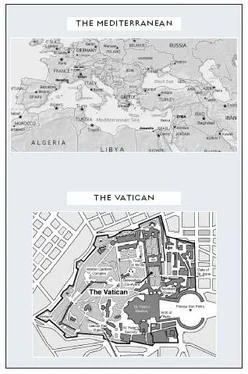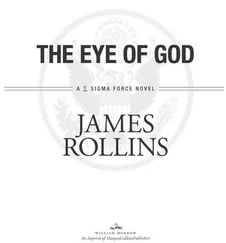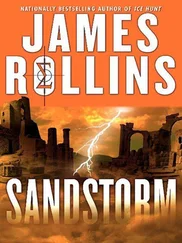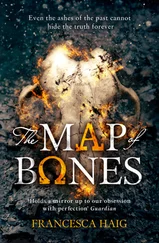“Thank you,” she said into her cell phone. “The car is gone.”
“Are you secure?” It was the warrant officer from her station house. She had called in the tail and kept the line open.
“It appears to be.”
“Do you want a patrol sent out?”
“No need. There are carabinieri on guard on the Square. I’ll be fine from here. Ciao .”
She felt no embarrassment for calling in the false alarm. She would earn no ridicule. The Carabinieri Corps fostered a certain level of healthy paranoia among its men and women.
She found a parking space, climbed out, and locked her car. Still, she kept her cell phone in hand. She would’ve preferred her 9mm.
At the top of the ramp, she stepped out of the car park and crossed toward St. Peter’s Square. Though she approached one of the architectural masterpieces of the world, she kept a watch on the nearby streets and alleys.
There continued to be no sign of the BMW.
The car’s occupants had probably just been tourists, surveying the city’s landmarks in air-conditioned luxury rather than on foot in the blaze of the midday heat. Summer was high season, and all visitors eventually headed to the Vatican. It was most likely the very reason she thought she was being followed. Was it not said that all roads lead to Rome?
Or at least in this case, all traffic.
Satisfied, she pocketed her cell phone and crossed St. Peter’s Square, heading toward the far side.
As usual, her eyes were drawn down the length of the piazza. Across the travertine square rose St. Peter’s Basilica, built over the tomb of the martyred saint. Its dome, designed by Michelangelo, was the highest point in all of Rome. To either side, Bernini’s double colonnade swept out in two wide arcs, framing the keyhole-shaped plaza between. According to Bernini, the colonnade was supposed to represent the arms of Saint Peter reaching out to embrace the faithful into the fold. Atop these arms, one hundred and forty stone saints perched and stared down upon the spectacle below.
And a spectacle it was.
What had once been Nero’s circus continued to be a circus.
All around, voices babbled in French, Arabic, Polish, Hebrew, Dutch, Chinese. Tour groups congregated in islands around guides; sightseers stood with arms around shoulders, wearing false grins as photographs were taken; a few pious stood in the sun, Bibles open in hands, heads bowed in prayers. A tiny cluster of Korean supplicants knelt on the stones, all dressed in yellow. Throughout the square, vendors worked the crowd, selling papal coins, scented rosaries, and blessed crucifixes.
She gratefully reached the far side of the square and approached one of the five entrances to the main complex. Porta Sant’Anna. The gate nearest to her destination.
She stepped to one of the Swiss Guards. As was traditional for this gate, he was dressed in a uniform of dark blue with a white collar, topped by a black beret. He took her name, checked her identification, and glanced up and down her slender frame as if disbelieving she was a Carabinieri lieutenant. Once satisfied, he perfunctorily directed her off to the side, to one of the Vigilanza, the Vatican Police, where a laminated pass was handed to her.
“Keep it with you at all times,” the policeman warned.
Armed with her pass, she followed the line of visitors through the gate and down Via del Pellegrino.
Most of the city-state was off-limits. The only public spaces were St. Peter’s Basilica, the Vatican Museums, and the Gardens. The rest of the hundred acres were restricted without special permission.
But one section was truly forbidden territory to all but a few.
The Apostolic Palace, the home of the pope.
Her destination.
Rachel marched between the yellow-brick barracks of the Swiss Guard and the gray cliffs of St. Anne Church. Here was none of the majesty of the holiest of the holy states, just a crowded sidewalk and a congested line of cars, a gridlock inside Vatican City. Passing the papal printing office and post office, she crossed toward the entrance to the Apostolic Palace.
As she approached, she studied the gray-brick structure. It appeared more a utilitarian government building than the seat of the Holy See. But its looks were deceptive. Even the roof. It appeared drab and flat, unremarkable. But she knew atop the Apostolic Palace lay a hidden garden, with fountains, trellis-lined paths, and neatly manicured shrubs. All was masked behind a false roof, sheltering His Holiness from the casual eye below and from any assassin’s high-powered scope out in the city.
To her, it represented the Vatican at large: mysterious, secret, even slightly paranoid, but at its heart, a place of simple beauty and piety.
And perhaps the same could be said of her. While she was mostly a lapsed Catholic, only attending mass on holidays, she still had a core of faith that remained true.
Reaching the security station before the palace, Rachel showed her pass three more times to the Swiss Guards. As she did, she wondered if this was some nod back to Peter’s thrice denial of Christ before the cock crowed.
At last, she gained admission to the palace proper. A guide awaited her, an American seminary student named Jacob. He was a wiry man in his mid-twenties, his blond hair already balding, dressed in black linen slacks and a white shirt, buttoned to the top.
“If you’ll follow me, I’ve been directed to take you to Monsignor Verona.” He did a comical double take at her visitor’s pass and stuttered with surprise. “Lieutenant Verona? Are…are you related to the monsignor?”
“He’s my uncle.”
A rapid nod as he collected himself. “I’m sorry. I was only told to expect a Carabinieri officer.” He waved her to follow him. “I am a student and aide for Monsignor Verona at the Greg.”
She nodded. Most of her uncle’s students revered the man. He was deeply devoted to the Church but still maintained a strong scientific outlook. He even had a placard on the door to his university office, bearing the same inscription that once graced Plato’s door: Let no one enter who does not know geometry.
Rachel was led through the entrance to the palace. She quickly lost her way. She had only been here once before, when her uncle was being promoted to the head of the Pontifical Institute of Christian Archaeology. She had attended the private papal audience. But the place was gigantic, with fifteen hundred rooms, a thousand staircases, and twenty courtyards. Even now, rather than heading up toward the pope’s residence on the top floor, they were headed down.
She did not understand why her uncle asked her to meet him here, rather than at his university office. Had there been a theft? If so, why not tell her on the phone? Then again, she was well aware of the Vatican’s strict Code of Silence. It was written into canon law. The Holy See knew how to keep its secrets.
At last they reached a small, nondescript door.
Jacob opened it for her.
Rachel stepped through into an odd Kafkaesque chamber. Sterilely lit, the chamber was long and narrow, but its ceilings were high. Against the walls, gray steel filing cabinets and drawers climbed from floor to ceiling. A tall library ladder leaned against one wall, necessary to reach the highest drawers. Though spotlessly clean, the space smelled dusty and old.
“Rachel!” her uncle called from a corner. He stood with a priest at a desk in a corner. She was waved over. “You made good time, my dear. Then again, I’ve driven with you before. Any casualties?”
She smiled at him and crossed to the desk. She noted that her uncle was not wearing his usual outfit of jeans, T-shirt, and cardigan, but was dressed more formally, suiting his station, in a black cassock with purple piping and buttons. He’d even oiled the curls of his salt-and-pepper hair and trimmed his goatee tight to his face.
Читать дальше










